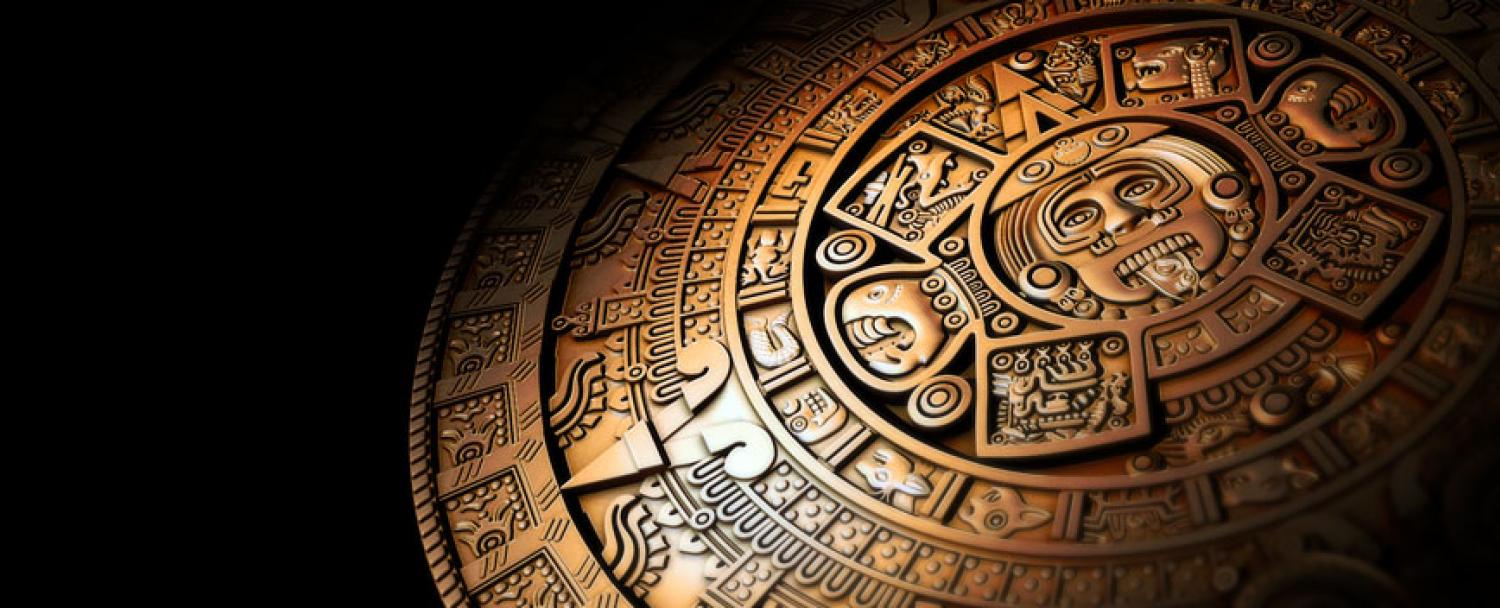How The Maya Calendar Works
The Maya were remarkable mathematicians and astrologers, and certainly some of history’s most proficient, accurate keepers of time. To appreciate the Maya concept of time, It is important to understand the different calendar systems they developed and how they were used.
The Tzolk’in or Sacred Round calendar consists of a 260 day cycle. This calendar is composed of 20 day names, each represented by a distinctive symbol, or glyph, and thirteen “tones”, arranged in sequential numerical order from one to thirteen.
The Tzolk’in calendar cycle begins with the first day name, Imix’ and tone number one. The days then continue with a combination of the next day name, Ik’ and the number two, and then the day name Ak'b'al combined with the number three and so on, the day names and tones continuing to combine in that order until 13 tones are used.
After the arrival of day 13, denoted as Bén and aligned to the number 13, the days begin again with the 14th glyph, Ix’ and the number one. The rotation through the series of the tones and glyphs in this manner results in 260 unique combinations of a day name and tone – hence the 260 day cycle.
It is useful to think of the Tzolk’in as two intermeshing gears, one inside the other, with the 13 numerals marked at intervals around the smaller gear set inside a larger one that is marked with day names denoted by glyphs. If you arrange those gears together at the number one and the day name Imix', and then rotate them, continuing around to the number one and Imix' again, you will produce 260 combinations of unique days. The “teeth” of the gears revolve and mesh until the final combination clicks into place at 13 Ajaw, marking the end of the year.
It is safe to say, and with no pun intended, that Maya life revolved around the Tzolk'in calendar. As with modern belief in astrology, the Maya believed that a person’s birth date determines their personal and spiritual characteristics as well as their place in society. The Tzolk'in calendar was also of primary importance in determining the most auspicious dates for every aspect of Maya life and to determine the specific dates for when important events, sacrifices and ceremonies would take place.
At the beginning of each uinal (period of 20 days), day keepers and other members of the sacred elite would count forward to determine when religious and ceremonial events would occur. They would select the dates that would be the most effective for communion with the gods and propitious for sacred rites and activities.
The Tzolk'in calendar has essential spiritual, esoteric and social functions but it does not measure a solar year - the time it takes for the sun to complete a cycle. Instead, the Maya used another calendar, the Haab, to track the length of time that we consider to be a full year.
The Haab Calendar and the Calendar Round
The Haab calendar is based on the cycle of the sun and was used for civil, agricultural, accounting and administrative purposes. Like the Tzolk'in calendar, it’s also composed of uinals (periods of 20 days), and each day has its own glyph and number. However, instead of using 13 uinals for 260 days, the Haab calendar has 18 uinals, resulting in 360 days.
In the Haab calendar, the names of the month are:
| 1. Pop | 7. Yaxkin | 13. Mac |
| 2. Uo | 8. Mol | 14. Kankin |
| 3. Zip | 9. Chen | 15. Muan |
| 4. Zotz | 10. Yax | 16. Pax |
| 5. Tzec | 11. Zac | 17. Kayab |
| 6. Xul | 12. Ceh | 18. Cumku |
Instead of every day, as with Tzolkin dates, the Haab month names change every 20 days: the day after 4 Zotz is 5 Zotz, followed by 6 Zotz ... and so on up to 19 Zotz, which is followed by 0 Tzec.
However, as 360 days does not represent a complete solar cycle, Maya astrologers and mathematicians added five “nameless days” known as the Wayeb. Sometimes referred to as a separate “month”, Wayeb is an inauspicious time with a reputation for bad luck and calamity. Also referred to as “days without souls” they were a time for prayer and mourning, with many daily activities, such as making fires and eating hot food curtailed.
The Calendar Round
The length of the Tzolk’in year was 260 days and the length of the Haab year was 365 days. The smallest number that can be divided evenly by 260 and 365 is 18,980, or 365×52; this was known as the Calendar Round. If a day is, for example, "4 Ahau 8 Cumku," the next day falling on "4 Ahau 8 Cumku" would be 18,980 days or about 52 years later. A Calendar Round was roughly one lifetime.
The Long Count Calendar
As we see, Calendar Round dates record time in 52 solar days, or 18,980 day cycles. To measure, record and predict events over longer periods of time, the Mesoamericans developed the Long Count. Long Count dates are the ones usually recorded on monuments and stellae.
The basic unit of measurement in the Long Count is the day, or k’in. Twenty k’ins make a uinal, and eighteen uinals make a tun. Twenty tuns then make a k’tun, and twenty k’tuns are known as a b’ak’tun.
k'in = 1 day
uinal or winal = 20 k'in = 20 days (~month)
tun = 18 uinal = 360 days (~1 year)
k'atun = 20 tun = 7200 days (~20 years)
baktun = 20 k'atun = 144,000 days (~400 years)
The Long Count begins with a Maya creation date of 4 Ahaw, 8Kumkú, which translates as August 11, 3114 BC in the Georgian Calendar or September 6 of the same year in the Julian Calendar. But rather than employing a decimal, base-10 system as in western numbering, the Long Count uses a mixed base-20/base-18 scheme.
It is widely accepted that the Long Count's "zero”, or creation date was August 11 3114BC, and that this marked the end of a previous world and the beginning of the current one, and it is further conjectured that the end of this current thirteenth b'ak'tun will fall on the Maya date 13.0.0.0.0, or December 21 2012.
This event has been given much attention in recent times and unfortunately has been subject to gross misinterpretations of Maya history and cosmology. Sensational films, television shows, internet exposure and other media present the end of the 13th b'ak'tun as “proof” of an impending apocalypse and global destruction. In fact, most serious Maya scholars and contemporary Maya daykeepers and other accepted spiritual and village leaders consider it to be simply the end of one cycle of time and the beginning of another.
It is unknown what significance the classic Maya gave the 13th b'ak'tun, and most references to it in surviving inscriptions are simply historical markers, with no deep prophesies or predictions. However, we do know that the Maya had a profound regard for cosmological cycles and went to great pains to meticulously record and predict them. It can be supposed that the winter solstice of 2012 did have great import for the Maya, but many people feel it would be celebrated as a time of renewal and the beginning of a new era – much as we celebrate New Year’s, but with the significance and reverence for an event that occurs only once every 52,000 years.













